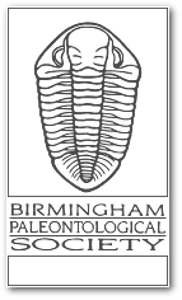This month, BPS visited the "education center" of a local Jefferson County quarry, where school children are taught about quarry operations in a nice building with a great view of the quarry, and a small working model of the conveyor activity. Inside, there were numerous fossil displays exhibiting fossils from many of their quarry locations around the south. Upon seeing several whole crinoids on display, we were practically drooling to get going on the collecting trip. The group then drove to a quarry in Morgan County, Alabama. This was a site where no one had collected before, other than quarry personnel, and what a fine group of specimens were found! Large blastoids, crinoids, horned coral, and archimedes were our primary finds. At least 6 whole crinoids were found, and the excitement of the members upon finding yet another of these wonderful specimens was very exciting! Due to the unusually chilly, overcast weather as compared to the prior few weeks, no rattlesnakes were spotted, though our leader said he had encountered 4 of them last summer.
(Photos courtesy Ron Beerman, Bill Cunningham, Greg Mestler & Vicki Lais.)

Several whole crinoids were found on the trip; this one by Vicki.

Several BPS members diligently searching the spoil piles.

Greg dissolved a slab of limestone he took home and found these crinoids inside.

Numerous blastoids, crinoid parts, and horned coral were found.

Crinoids found by Jan and Claire.

Found by Ron.

Found by Bill.

The view from the collecting site.

Outcrop of rugosa coral.

Found by Ron.

Bill and Adele in foreground, Leisa in background.


Looking in all the cracks and crevices.

More of Ron's finds.
Our third stop of the day was at a roadcut in Lawrence County, Alabama, where numerous specimens of rugosa coral, including whole coral heads the size of boulders, were found. There was even a small cave-like cavity in the ground that had been uncovered, where one could peer in and see a small, undisturbed area of coral in place. Both collecting sites were in the Bangor Limestone.

More rugosa coral, from the second site of the day.
